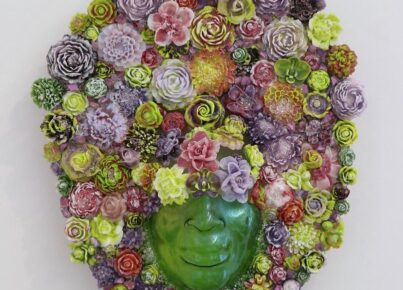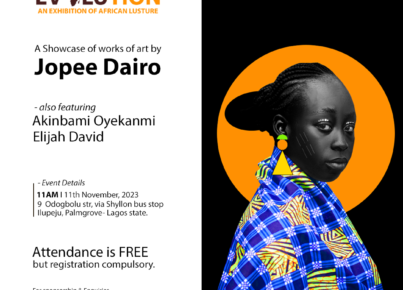He works with collage, magazine and newspaper a large-scale, vibrant mixed-media paintings and drawings. These allows him to think of dreams in the largeness and in the same colours of those youth who roam the streets. In the paintings of Aboudia, we cannot be sure if the figures are alive or dead, if the nightmare they inhabit is reality or fabrication. The figures are drawn in the brutal and naive style of a child, but they are not so easily identified: these are not the same photogenic children pictured on adverts for development funds and charities, inviting paternalistic investment, but sketchy, ghostly figures whose mouths are not prettily silent or widely smiling but cancelled out, eyes not vacant but withdrawn, their speech impossible and thoughts illegible, they are unavailable to the viewer.
My work is similar to that of a journalist writing an article: I was simply describing a situation, in order to create a record of my country’s recent history.
Aboudia’s painting is infleunced by the aesthetics of graffiti in the communities where he lives and traditional African carvings to depict the youth he engages with regularly in the city’s toughest neighborhoods. He is also influenced by the riots that followed the disputed Ivorian presidential election in late 2010 where he began a body of work responding to the horrors of the country’s devastating political situation from a basement studio.
Born 1983, Abidjan, Ivory Coast
Aboudia is also a master of multi-layered imagery as he mixes with great energy characters from his direct neighbourhood and fragments of found comic strips, advertising and the media. Enigmatic details come in and out of focus, often only revealing themselves after several viewings. His expression of revolt and explosive, incendiary life in his everyday urban environment brings to mind artists from the great American tradition, Twombly perhaps in his casual-looking execution, and Dubuffet. Aboudia’s unrestrained use of violent figuration is a welcome reminder of the power of paint to suggest the vitality and chaos of life.
He sees himself as a mouth piece for the scores of disadvantaged children who populate the streets of his city of Abidjan. He places top priority on children in his work because it is the children that inspires him, and they are at the foundation of what he creates. He envisioned a world of positivity: a world without war, without children on the streets, without children orphaned by war, without children mistreated, a world for children who are happy, joyful, educated and in good health.
His first exhibition was at Jack Bell’s gallery Les Fantômes. And since then he has exhibited in Africa, Europe and America, where influential contemporary art collectors with the likes of Charles Saatchi, Jean Pigozzi and Frank Cohen patronized him.
Aboudia lives and works in Abidjan, and also part-time in Brooklyn, New York.







